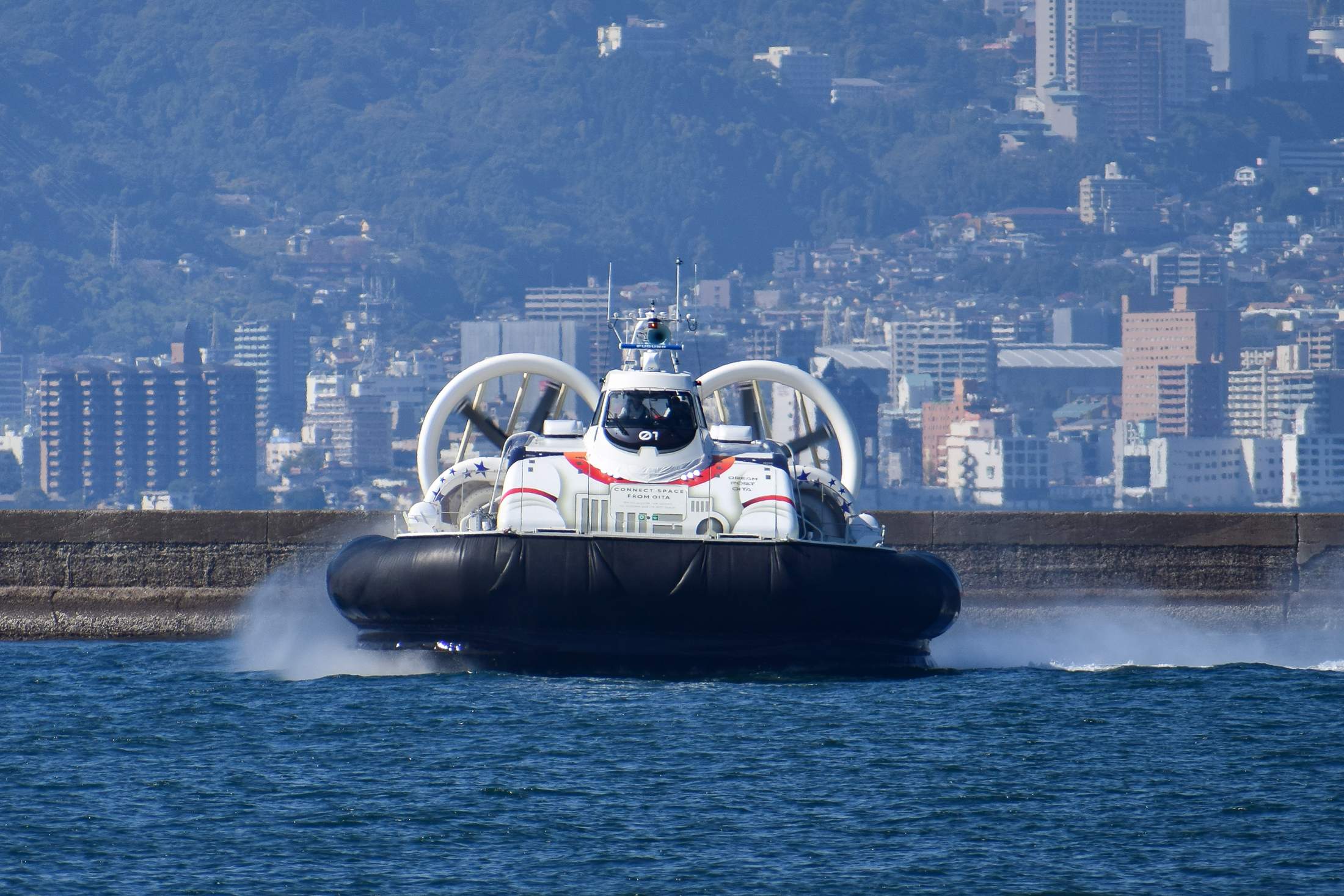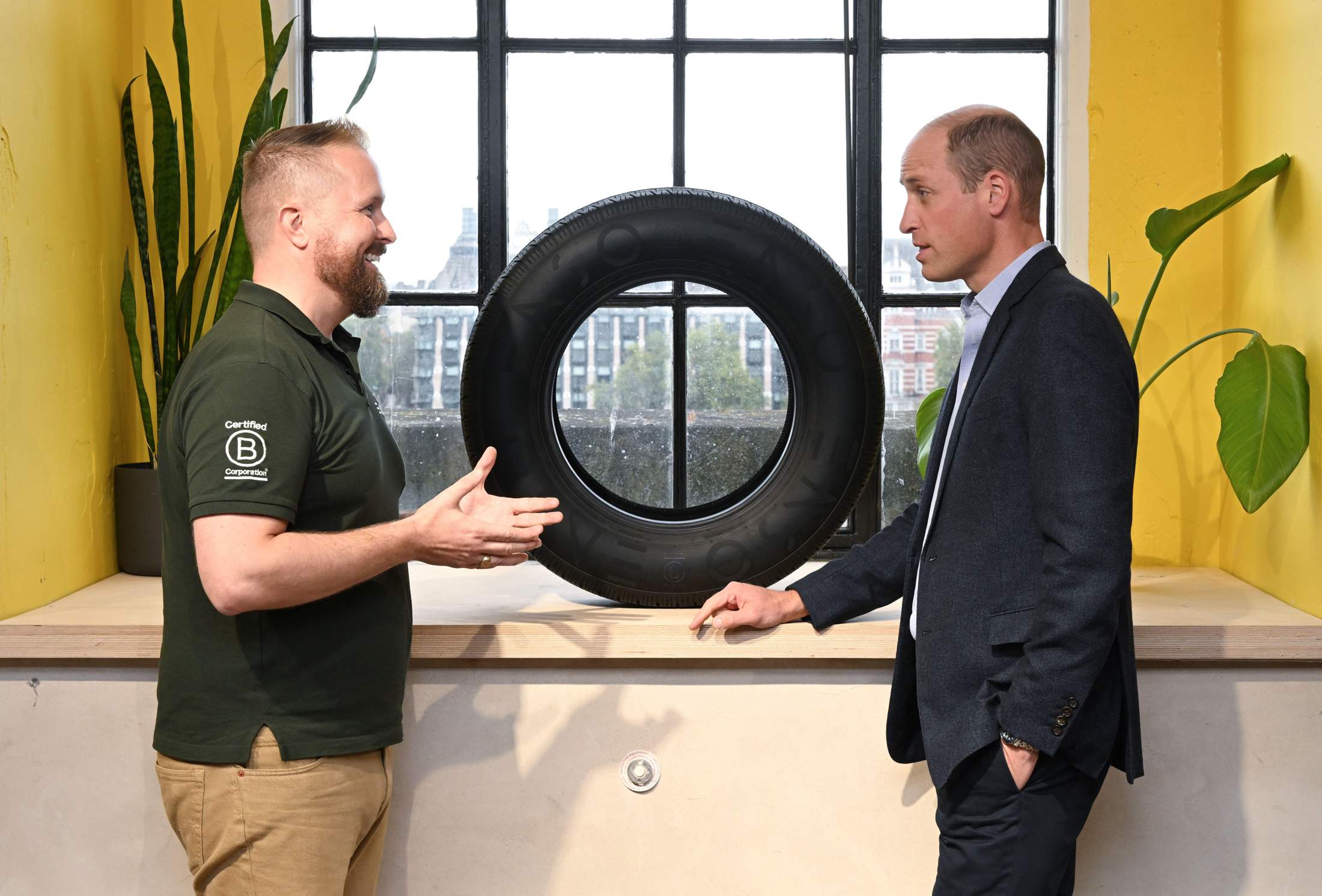September / Global
The Agenda: Business
How the tyre is going green, electric motorcycles in France and the Japanese hovercraft revival.
hovercraft –––– japan
Bouncing back

As modes of marine travel go, the hovercraft has a pleasurable whiff of yesteryear. Big in the 1960s, it has all but disappeared from view, falling out of favour due to high operating costs. In Japan, however, the hovercraft is about to be revived. Oita prefecture has bought three Griffon 12000TDs and is set to put them into operation before the end of the year. Oita used to have a popular hovercraft, the Oita Hover Ferry, which launched in 1971 and ferried as many as 440,000 passengers a year between the airport and the centre of the city in a swift half-hour. When a new expressway to the airport was built, passenger numbers dwindled and the route was dropped in 2009.
Nine years later the governor realised that the hour-long drive to the airport was a backward step and looked for a way of speeding up the journey. And so, Oita has come full circle with three new 45-knot craft, made by Griffon Hoverwork in the UK, and a sparkling new terminal in Nishi-Oita. Oita has big ambitions for the 30-minute route: the projections are for 300,000 to 400,000 passengers annually and, since it will be the only hovercraft route in Japan (the world’s only other year-round passenger service runs from Portsmouth to the Isle of Wight in the UK), it should attract tourists too. Aside from trips to the airport, weekend excursions around Beppu Bay are planned. The craft have been named by the public as Tanso, Baien and Banri, after three Confucian scholars. The prefecture is anticipating an economic ripple effect to the tune of ¥61.4bn (€379m) over the first 20 years.
e-motors –––– France
Fresh start
Though most motorcycles still use petrol, the industry is undergoing a transition thanks to entrepreneurs such as Simon Dabadie, founder and ceo of dab Motors, a boutique electric-motorcycle brand based in Bayonne in southwest France.

An engineer with deep roots in the industry, Dabadie started the company in his garage six years ago. “I wanted to make something disruptive, not just a mobility instrument,” he says. “Humans need emotion and beauty, even in machines. We infuse culture, technology and just the right touch of madness in our designs.”
Initially noticed for its petrol bikes, dab Motors shifted gears to an electric concept in 2021. “We forgot everything we know about motorcycles. The beauty of electric motorcycles is that you can start from scratch.”
The challenge, however, is scaling production without compromising on design. “We have huge know-how in Europe, in automotive and motorcycle manufacturing,” he says. “I want to keep this local approach when we are manufacturing our bikes. We decided to make fewer products but do them really well.”
With high-profile collaborations with Burberry and the company’s acquisition by Peugeot Motocycles last year, dab’s presence at the top of a niche market is solid. The company is due to launch a limited-edition run of 400 bikes, the dab 1a, made at the Peugeot factory in Beaulieu Mandeure.
Dabadie (pictured) hopes that his creations will transform mobility in urban environments. “I would love to see our bikes travelling in cities, solving the problem of noisy scooters and making people smile.”
The ENTREPRENEURS
gregory scruggs on...
Wheels of fortune
UK-based Icelandic entrepreneur Gunnlaugur Erlendsson, founder and CEO of tyre start-up Enso, is obsessed with tyres. He sees the topic as an underappreciated issue facing the world’s transition to cleaner transport. Electric vehicles, for all their benefits, are heavier than their non-electric counterparts so they send tyres to the landfill more quickly. That suits the tyre industry, which is eager to simply sell more just fine. Traditional tyres also generate dust particles that worsen air quality and poison waterways. “The world economy runs on tyres but we never really think about them,” says Erlendsson.

He founded Enso in 2016 with a mission to build longer-lasting and less polluting tyres with higher-quality raw materials. After years of research, the company began production at an Algerian plant and subjected the new tyres to a year-long Transport for London trial. They were shown to reduce emissions by 35 per cent and extend EV driving range by 10 per cent, essential improvements for fleet vehicles operating in the UK capital’s Ultra-Low Emission Zone. Today some 1,000 London taxis roll on Enso tyres.
Enso was a 2023 finalist for Prince William’s Earthshot Prize but Erlendsson (pictured, on left, with the prince) has his sights set on market share as much as accolades. By December, Enso tyres will be sold in the US, the world’s second-largest automotive market. In June, Enso signed a letter of intent with the US Export-Import Bank to invest $500m (€463m) in a manufacturing facility slated to open in 2027. At full capacity, the factory could make 20 million tyres, or 8 per cent of the domestic market. No one company currently dominates the US tyre market, which makes it ripe for newcomers. “It’s not enough for us to just develop the technology,” says Erlendsson. “We need to actually put these tyres on the market at scale.” —
For more ideas that are gaining traction, listen to Monocle Radio’s business programme, ‘The Entrepreneurs’.


